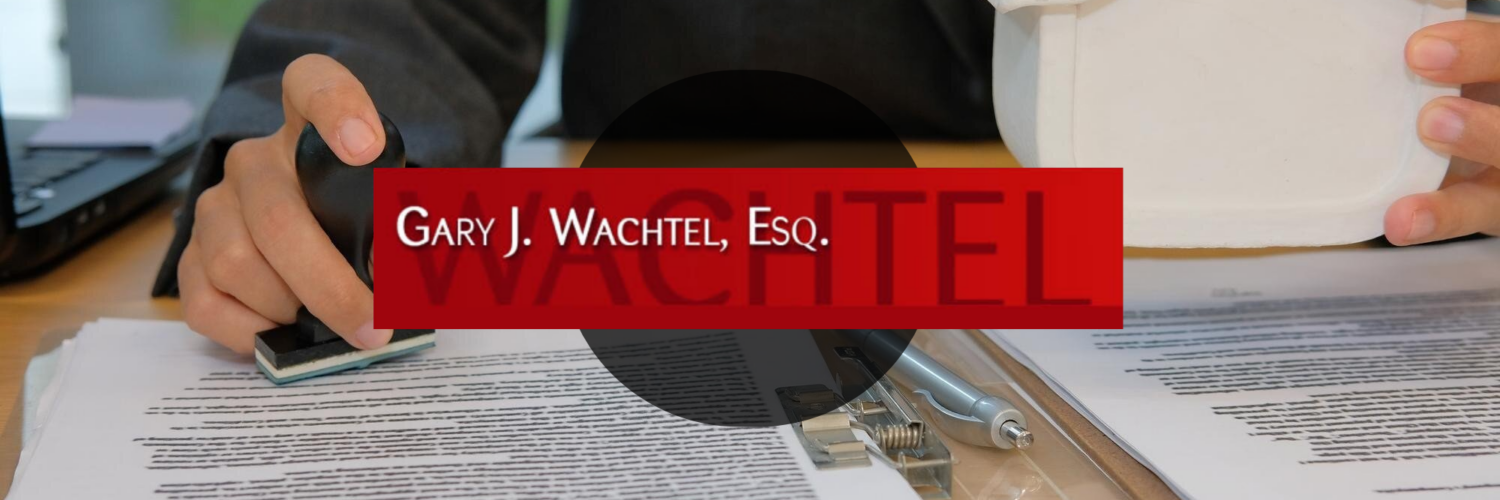Property disputes in New York City occupy a unique space at the intersection of law, business, and urban policy. The density of the market, the diversity of property uses, and the complexity of lease structures mean that conflicts are not just common but often unavoidable. When these disagreements escalate, litigation becomes the pathway to resolution. Understanding when to escalate a dispute into formal legal proceedings is therefore an essential skill for property owners, landlords, tenants, and professionals in the commercial real estate sector.
Legal observers have long noted that New York City presents a distinctive mix of pressures: high property values, strict regulatory frameworks, and intense competition for space. This combination creates a fertile environment for conflict, from disagreements over lease obligations to disputes involving construction projects, zoning restrictions, or property boundaries. Each dispute requires careful consideration of both the legal framework and the practical realities of the New York real estate market.
For commercial property professionals, litigation decisions also carry reputational, financial, and operational consequences. A poorly timed or poorly structured legal action can be more damaging than the original conflict. Conversely, a timely and strategically prepared case can secure rights, protect investments, and set important precedents. The following sections examine the circumstances in which property litigation becomes not just advisable but necessary, grounding the discussion in statutory authority, case law, and broader market context.
The Landscape of Property Disputes in New York City
Property disputes in New York typically fall into several categories: landlord-tenant conflicts, boundary and easement disagreements, construction and development disputes, zoning and permitting challenges, and conflicts over purchase and sale agreements. Within the commercial context, disputes may also involve insurance claims, co-op and condominium board governance, or the enforcement of lease covenants.
The New York City Department of Buildings provides extensive oversight of construction and compliance matters, and its regulations often intersect with litigation when violations are alleged or when competing stakeholders interpret obligations differently. In such cases, the dispute may not only involve private parties but also regulatory agencies, making litigation more complex.
Disputes also arise in the context of business tenancy, where the terms of commercial leases dictate the allocation of responsibilities for repairs, utilities, insurance, and other costs. According to the U.S. Small Business Administration – Leasing Guidance, commercial tenants must pay close attention to lease terms before signing, as these contracts establish obligations that can later form the basis of litigation. In New York, where lease terms are often heavily negotiated, even small ambiguities can trigger costly disputes.
When such conflicts cannot be resolved through negotiation or alternative dispute resolution, pursuing new york real estate litigation becomes the logical next step. This area of law provides the structured mechanisms to enforce rights, resolve disagreements, and, where necessary, compel compliance with contractual or statutory obligations.

Assessing the Threshold for Litigation
One of the first questions stakeholders face is whether a dispute warrants escalation to the courts. Property disputes can often be addressed through negotiation, mediation, or arbitration, but not every situation lends itself to these alternatives. The decision to litigate often hinges on the severity of the conflict, the amount of money at stake, and the likelihood of a favorable outcome.
For example, minor disagreements about routine maintenance obligations may not justify the cost and time of litigation. However, disputes involving significant financial losses, long-term contractual obligations, or rights that cannot easily be restored may require court intervention. In New York, where commercial leases frequently span multiple years and involve substantial rent obligations, the stakes are often too high to leave unresolved.
The Cornell Legal Information Institute provides a comprehensive overview of contract enforcement principles, emphasizing that litigation is often necessary when breaches materially affect the underlying purpose of the agreement. This principle applies with particular force to real estate contracts, where possession, use, and financial returns are directly tied to the enforceability of obligations.
In practice, parties must evaluate not only the legal merits of their case but also the broader business implications. For landlords, pursuing litigation may deter future breaches and protect property values. For tenants, litigation may provide leverage in negotiations or shield against unfair enforcement practices. The calculus is both legal and strategic.
Common Grounds for Property Litigation
Breach of Lease Agreements
One of the most frequent causes of property litigation in New York is the breach of commercial lease agreements. Landlords may sue tenants for unpaid rent, unauthorized alterations, or improper use of premises. Tenants, on the other hand, may bring actions for wrongful eviction, failure to maintain premises, or interference with quiet enjoyment. Each of these scenarios falls under the scope of new york real estate litigation, where courts interpret lease language and enforce obligations.
Boundary and Easement Disputes
Given the density of New York’s urban environment, disputes over property lines and easements are common. Whether involving rights of way, shared access, or encroachments, these conflicts often require judicial clarification, as surveys and title documents may conflict or lack sufficient detail.
Construction and Development Conflicts
Litigation also arises from construction-related issues, including delays, defective work, or disputes over payment between contractors, developers, and property owners. Because construction projects in New York are heavily regulated, litigation often intersects with city permits and safety rules enforced by the New York City Department of Buildings.
Co-op and Condominium Conflicts
Shareholders and unit owners may pursue claims against boards for breach of fiduciary duty, mismanagement, or failure to enforce building rules. These cases highlight the importance of governance in New York real estate and the ways in which internal disputes can escalate into formal litigation.
The Role of Real Estate Litigation in Market Stability
While litigation may appear adversarial, it also plays a stabilizing role in New York’s real estate market. By providing a mechanism to resolve disputes, litigation reduces uncertainty and clarifies the rules governing property relationships. This legal clarity is critical in a market where billions of dollars are tied up in long-term leases, development projects, and property investments.
Courts in New York frequently set precedents that shape the interpretation of lease clauses, zoning ordinances, and ownership rights. These precedents inform future transactions and provide a roadmap for structuring agreements. Without litigation, disputes might linger unresolved, creating uncertainty and discouraging investment.
The practice of new york real estate litigation thus contributes not only to individual outcomes but also to the broader functioning of the real estate ecosystem. Property professionals rely on judicial decisions to guide negotiations, assess risks, and protect interests.
Litigation as a Strategic Business Decision
For many property professionals, the choice to litigate is as much about strategy as it is about law. Litigation can serve as leverage in negotiations, compelling a party to take settlement discussions more seriously. It can also demonstrate to stakeholders, such as investors, lenders, and tenants, that a party is committed to defending its rights.
However, litigation also carries costs. It can be expensive, time-consuming, and unpredictable. The reputational risks are particularly acute in New York, where high-profile disputes often attract media attention. Thus, the decision to litigate should be grounded in both legal analysis and strategic foresight.
Stakeholders must also recognize the potential for litigation to shape long-term relationships. While some disputes are one-off conflicts, others involve ongoing business relationships, such as landlord-tenant interactions in multi-year leases. Litigation in these cases must be carefully managed to avoid permanently damaging important partnerships.

Commercial Lease Litigation in Practice
Litigation involving commercial leases often turns on the interpretation of specific contractual language. Courts may examine whether a lease provision is ambiguous, whether a party acted in good faith, or whether external circumstances justify nonperformance. For instance, disputes during the COVID-19 pandemic often centered on force majeure clauses and whether government shutdowns excused rent obligations.
Attorneys handling new york real estate litigation must therefore combine a detailed understanding of contract law with practical knowledge of the local real estate market. The interpretation of a single clause can determine the allocation of millions of dollars in obligations and liabilities.
For businesses considering litigation, consulting with established professionals such as those at Gary Wachtel ensures that legal action is grounded in both statutory authority and market expertise.
When Litigation Intersects with Regulation
Property litigation in New York often involves not just private contracts but also public law. For example, zoning disputes may involve challenges to decisions made by the City Planning Commission or the Board of Standards and Appeals. Construction disputes may turn on compliance with safety codes enforced by the New York City Department of Buildings.
Similarly, disputes over accessibility standards or housing regulations may implicate federal and state laws. Litigants must therefore be prepared to navigate not only contract law but also administrative law, statutory obligations, and constitutional principles.
The involvement of multiple legal frameworks underscores the importance of experienced representation in new york real estate litigation. A dispute that appears to be a simple breach of contract case may evolve into a multifaceted litigation involving several regulatory agencies and overlapping jurisdictions.
Alternative Dispute Resolution Versus Litigation
Before commencing litigation, parties often consider alternative dispute resolution (ADR) methods such as mediation or arbitration. ADR can offer a quicker, less adversarial, and more confidential process. However, ADR may not always be appropriate. In some cases, a binding court judgment is necessary to enforce rights or clarify legal obligations.
For example, disputes involving title, zoning, or regulatory compliance may not be suitable for ADR, as they require authoritative judicial rulings. Similarly, where parties seek injunctive relief to prevent ongoing harm, litigation provides remedies that ADR cannot match.
Thus, while ADR remains a valuable tool in the New York real estate market, stakeholders must recognize when litigation is unavoidable. For many property owners and tenants, working with an experienced team like Gary Wachtel ensures that the correct path is chosen from the outset.
The Broader Implications of Property Litigation
Property litigation does more than resolve individual disputes; it shapes the broader legal and economic environment of New York. Precedents established in litigation influence future contract drafting, regulatory enforcement, and market behavior. For example, widely publicized cases regarding lease obligations during economic downturns inform how landlords and tenants negotiate future leases.
Moreover, litigation outcomes often ripple across industries. Developers may alter project timelines based on court decisions involving construction delays. Investors may adjust their risk assessments in light of judgments concerning zoning disputes. Even small businesses, guided by resources like the U.S. Small Business Administration – Leasing Guidance, may change their approach to lease negotiations after observing litigation trends.
In this way, the practice of new york real estate litigation functions as both a dispute resolution mechanism and a market-shaping force. It creates predictability, establishes boundaries, and ensures accountability, thereby strengthening the fabric of New York’s real estate industry.
Final Words
Property litigation in New York City is not a step to be taken lightly, but it is often a necessary tool for protecting rights, resolving disputes, and maintaining market stability. Stakeholders must assess the legal, financial, and strategic dimensions of each conflict before proceeding. In a city as complex and high-stakes as New York, litigation decisions resonate far beyond the courtroom, influencing business relationships, investment strategies, and the long-term health of the market.
For landlords, tenants, developers, and investors, understanding when to pursue litigation is both a legal necessity and a strategic imperative. By navigating disputes through new york real estate litigation, parties not only protect their immediate interests but also contribute to the stability and predictability of New York’s real estate market.
The broader impact of litigation also lies in its ability to clarify ambiguities in contracts, test the boundaries of regulatory authority, and establish precedents that shape future transactions. Each resolved dispute becomes part of the city’s legal framework, guiding how future leases are drafted, how development agreements are enforced, and how regulatory compliance is measured. In this sense, litigation not only safeguards present rights but also sets the stage for more orderly and transparent dealings across the entire market.
Ultimately, the decision to litigate is not just about resolving a single disagreement, it is about securing a position in a market defined by constant change and relentless competition. When handled with foresight and legal precision, litigation strengthens the foundations upon which New York’s property system is built, ensuring that its dynamic real estate environment continues to thrive under rules that are clear, enforceable, and fair to all parties involved.





